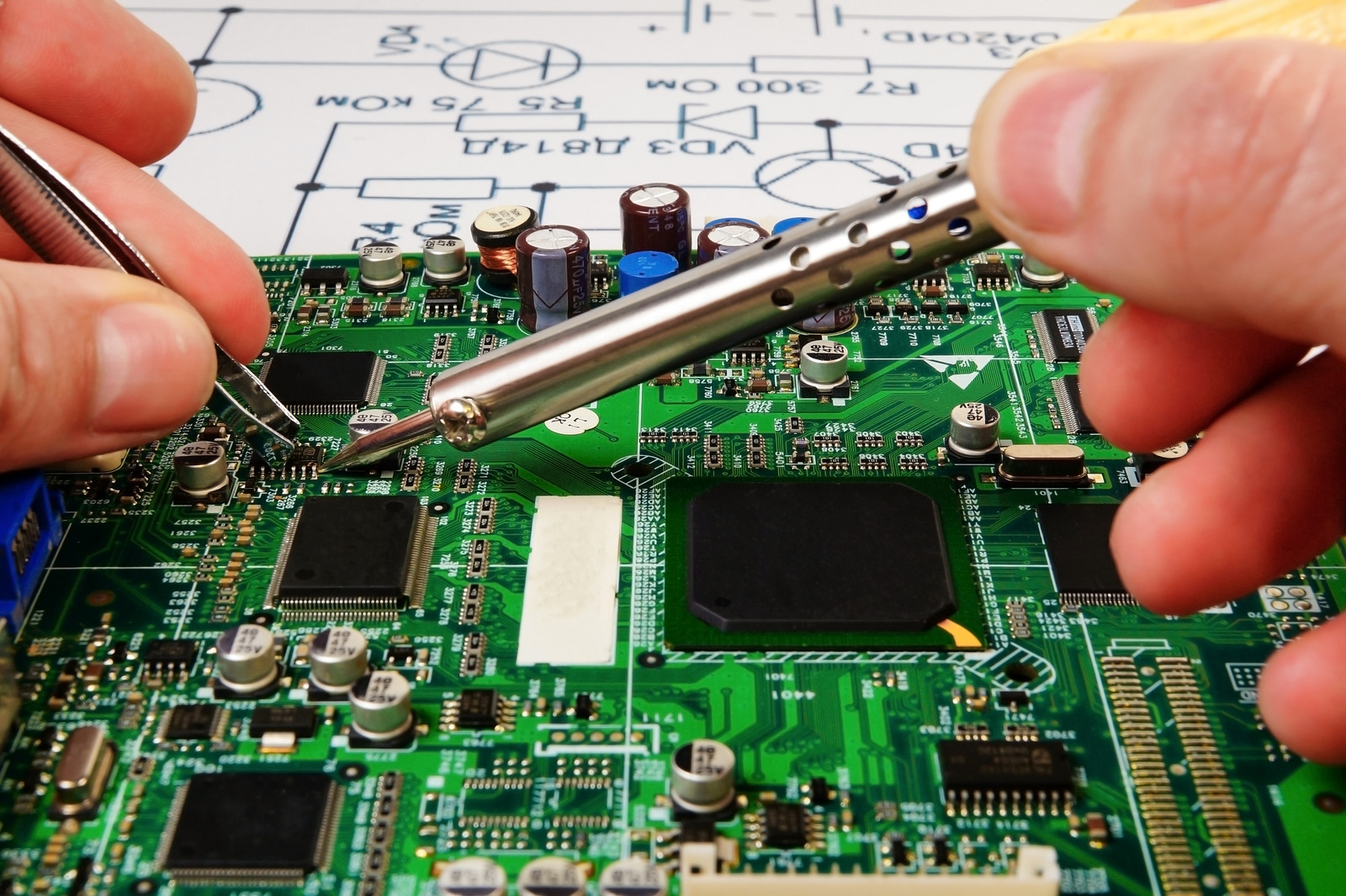
In electronics manufacturing, most costs and most problems originate at the design stage. A great product idea can still fail if it is difficult, expensive, or unreliable to manufacture.
That’s why Design for Manufacture (DFM) is so essential. DFM is a structured approach to product design that ensures products are easy, cost-effective, and high-quality to manufacture, without sacrificing functionality or performance.
At Contract Production Ltd, we integrate DFM into every stage of product development. As your trusted electronics manufacturing partner, we work closely with design engineers to identify risks early, prevent costly errors, and optimise designs for smooth, scalable production.
Done right, DFM can:
-
- Reduce manufacturing costs by 10–50%
- Shorten production timelines
- Prevent defects before they happen
- Improve yield and reliability
In this guide, we’ll explore:
-
- What is DFM?
- Why DFM matters
- The 6 core principles of DFM in electronics
- How DFM is applied at different stages
- Common DFM Mistakes to Avoid
- DFM and Cost Reduction
- Best practices for implementation
- The Future of DFM
- Frequently Asked Questions (FAQs)
- Conclusion
1. What is Design for Manufacture (DFM)?
Design for Manufacture is the practice of designing a product with its manufacturing process in mind, ensuring it can be built efficiently, cost-effectively, and to high-quality standards.
In electronics, DFM involves considering:
-
- PCB layout and manufacturability.
- Component availability and placement.
- Assembly line capabilities.
- Testing access points.
- Regulatory compliance needs.
At Contract Production Ltd, our engineering team provides design feedback from the start, helping customers avoid pitfalls that lead to delays, defects, and higher costs.
2. Why DFM Matters?
Without DFM, manufacturers face:
-
- Higher production costs: due to excessive steps or specialised tooling.
- Defects and failures: caused by poor layout or incompatible materials.
- Production delays: from rework and redesign.
- Obsolescence: if chosen components become unavailable.
Statistics:
Industry studies show that 70–80% of product cost is determined during the design phase. This means DFM decisions have more impact than anything done later in manufacturing.
By partnering with Contract Production Ltd, you gain proactive design insights that prevent problems before they happen, protecting both timelines and budgets.
3. The 6 Core Principles of DFM in Electronics
Simplify the Design
-
- Reduce the number of parts and assembly steps.
- Combine multiple functions into single components where possible.
- Avoid overly complex PCB layouts that require precision beyond normal manufacturing tolerance.
Example:
A PCB design with 3 different capacitor types can often be redesigned to use 1 universal type, reducing purchasing complexity and storage needs.
Standardise Components
-
- Use widely available, industry-standard parts.
- Avoid obsolete or custom components unless essential.
- Check manufacturer lead times before finalizing the BOM.
Why?
Standardisation:
-
- Reduces procurement delays.
- Allows volume discounts.
- Minimises the risk of line stoppages.
Contract Production Ltd works closely with global suppliers to secure reliable, long-term component availability. This reduces procurement delays, enables volume savings, and avoids costly line stoppages.
Design for Automated Assembly
Most modern electronics are assembled with pick-and-place machines and automated soldering.
To make the most of these, designers should:
-
- Maintain consistent component orientation.
- Allow adequate spacing for machine placement.
- Keep fiducial markers for alignment.
Bad practice:
A board with components facing in random orientations slows down the machine and increases error rates.
Our Pickering-based facility is optimised for automated SMT assembly, and our DFM reviews ensure designs are ready for high-speed pick-and-place machines, improving throughput and reducing errors.
Design for Testability (DFT)
A product must be easy to test during manufacturing.
This means:
-
- Adding test points for ICT or flying probe access.
- Ensuring signals can be probed without disturbing operation.
- Avoiding hidden joints that are impossible to inspect.
Tip:
Every design should include a test plan before the first prototype is built.
At Contract Production Ltd, we incorporate test strategy discussions early in the design phase, ensuring boards are built for reliability verification from day one.
Consider Manufacturing Tolerances
-
- Check that hole sizes, pad shapes, and component spacing meet manufacturing capabilities.
- Avoid ultra-fine pitch unless required.
- Use PCB panelization designs that maximise yield and minimise waste.
Benefit:
Fewer rejected boards due to tolerance issues.
Account for the Entire Product Lifecycle
Good DFM considers:
-
- Serviceability (can it be repaired?).
- Upgradability.
- End-of-life disposal or recycling.
This is sometimes called Design for X (DFX), where X could be manufacture, assembly, service, environment, or cost.
With Contract Production Ltd, you benefit from a long-term partner who not only builds your product but supports its lifecycle sustainability.
See how Contract Production can support your product.
4. Applying DFM at Different Stages
Concept Stage
-
- Review design feasibility.
- Identify manufacturing methods early.
- Set clear quality and cost targets.
Schematic Stage
-
- Choose components with good supply chain security.
- Minimise complexity in circuit design.
PCB Layout Stage
-
- Collaborate with manufacturing engineers.
- Follow industry-standard spacing and routing guidelines.
Prototype Stage
-
- Build small batches.
- Test manufacturing assumptions.
- Collect feedback from assembly teams.
Pre-Production Stage
-
- Run pilot builds to catch last-minute issues.
- Optimise for yield before full-scale production.
Bring your ideas to life with expert prototyping.
5. Common DFM Mistakes to Avoid
-
- Ignoring Manufacturer Input: Always involve production engineers early.
- Over-Engineering: More complexity rarely means better quality.
- Choosing Obsolete Components: Can stall production completely.
- Neglecting Test Access: Hard-to-test boards increase defect escapes.
- Focusing Only on Cost: Cheap designs may have high failure rates.
At Contract Production, our team ensures customers avoid these mistakes with proactive design reviews and expert guidance.
6. DFM and Cost Reduction – The Numbers
| Cost Factor | Without DFM | With DFM |
| PCB Layer Count |
6 layers |
4 layers |
|
Assembly Time per Unit |
8 minutes | 5 minutes |
| Defect Rate | 8% | 1% |
| Annual Scrap Cost | £50,000 | £6,000 |
A small investment in DFM during design saved tens of thousands per year.
7. Best Practices for Implementing DFM
-
- Collaborate Across Teams: Designers, engineers, and procurement should work together.
- Use DFM Checklists: Prevents common oversights.
- Leverage CAD Tools with DFM Rules: Many PCB design software packages include manufacturability checks.
- Review Early and Often: Don’t wait until prototypes to spot issues.
- Keep Up with Technology Trends: New materials, assembly techniques, and component packages may change DFM rules.
At Contract Production Ltd, these best practices are standard, giving our customers confidence in both quality and cost efficiency.
Learn more about our state-of-the-art PCB Assembly Services.
8. The Future of DFM
-
- AI-Driven PCB Layout Optimisation: Software can suggest routing and component placement for maximum manufacturability.
- Digital Twin Simulation: Virtual manufacturing runs before physical production.
- Automated DFM Analysis: Real-time feedback to designers as they create schematics.
By investing in these technologies, Contract Production Ltd ensures our customers remain ahead of the curve.
Check out our latest manufacturing facility.
9. Frequently Asked Questions (FAQs)
Q1: Is DFM only for high-volume production?
No. Even low-volume and prototype builds benefit from DFM. By addressing manufacturability early, you reduce defects, shorten build times, and avoid costly re-spins regardless of production volume.
Q2: Does DFM reduce product performance?
Not if applied correctly. The purpose of DFM is to improve manufacturability while maintaining or even enhancing product functionality. For example, optimising component placement can reduce manufacturing complexity and improve thermal or electrical performance.
Q3: How early should I start DFM?
Ideally, from day one of the design process. The earlier manufacturability is considered, the more you save in terms of cost, time, and design revisions.
Q4: Can DFM help with compliance and standards?
Yes. By aligning design decisions with industry-specific standards (such as IPC, ISO 13485, or IATF 16949), DFM helps ensure compliance while reducing the risk of redesigns or certification delays.
Q5: What are the most common issues DFM helps prevent?
Typical issues include:
-
- Insufficient component spacing leading to soldering defects.
- Overly complex PCB layouts that increase assembly costs.
- Incorrect pad sizes causing reliability problems.
- Poor thermal management designs that shorten product lifespan.
Q6: Who is responsible for DFM, the designer or the manufacturer?
Both share responsibility. Designers should apply DFM principles during development, while manufacturers provide expertise on process capabilities, materials, and constraints. The best results come from early collaboration.
Q7: Does DFM increase upfront costs?
Implementing DFM may require additional design reviews and adjustments upfront, but it significantly reduces total costs by minimising rework, improving yield, and accelerating time-to-market. It is an investment that delivers long-term savings.
Q8: Can DFM support product scalability?
Absolutely. DFM ensures that a design that works at the prototype stage can be scaled to volume production without introducing new risks, bottlenecks, or reliability issues.
Conclusion
Design for Manufacture is one of the most powerful cost-saving and quality-improving tools in electronics production.
By designing with the manufacturing process in mind, you:
-
- Lower production costs
- Higher quality and reliability
- Faster product delivery
- Increase long-term product reliability
As competition grows and supply chains become more volatile, companies that embrace DFM will not only save money but also deliver more consistent, reliable products, keeping customers satisfied and loyal.
Contract Production Ltd is your trusted UK partner in implementing DFM. With decades of experience, state-of-the-art facilities, and a commitment to collaboration, we help customers design and build electronics that are not only functional but also highly manufacturable, scalable, and reliable.
Looking to optimise your next design?
Partner with Contract Production Ltd for expert DFM support and world-class electronics manufacturing. Contact us at 01751 475950 or sales@contractproduction.co.uk








